 Soviet Union - 50+ Million built of all types combined.
Soviet Union - 50+ Million built of all types combined.
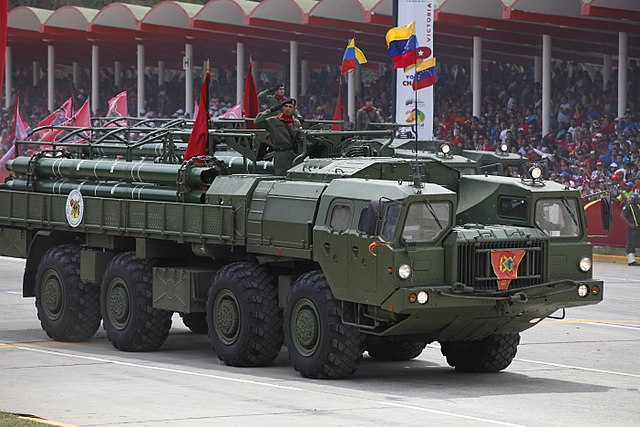
During the cold war, the advent of the missile age coincided with the need of even larger military trucks, always ale to deal with the worst climatic conditions and terrain, including mud and snow. Taking a radical departure over the Ford/Chevrolet inspired lorries of the 1930s that were still used en masse during WW2, lend-lease military trucks enabled a great deal of update for Soviet engineers, which inspired a new generation of military trucks, generally in 6x6 configuration, such as the ZIS-151 (1948).
Soon a generation appeared, clearly tailored around Soviet needs and locally designed, the ZIL-157 (1957), ZIL-130 series (1964), GAZ-66 (1964), Ural 375 (1961), or MAZ-500 serie. But soon also the need to carry, and later launch missiles rose the need of heavy duty chassis with 8x8 configurations and much more. The Soviet wheeled TELs of that era are quite impressive, certainly the largest trucks ever built. Outside the fairly well known MAZ-543 and ZIL-135 TELs carrying notably the SA-2 and Scud missile, well exported around the world, the need to carry ballitic missiles with their own erector launcher led to design 16x16 and even 32x32 vehicles, truly giants, and still capable of some off-road performance in the most adverse conditions.
They in fact became a crucial asset for the Soviet ground component of its deterrence, soon making fixed sites obsolete. The US on their side prefer not to use vehicles but to simply hide and spread silos through its territory, with a centralized management (NORAD).
Listing
 TELs and SPRL
TELs and SPRL
BM-14
BM-21 Grad
BM-30 Smerch
BAZ-5921/22 (OTR-21 Tochka)
ZIL/MAZ 135
MAZ-543 8x8 TEL
5p85 8x8 S-300 TEL
9K33 OSA
9P140 Uragan
AT-L
BAV-485
GAZ-46
GAZ-51
GAZ-63
GAZ-69
Ural 4320
ZIL-135
ZIL-151
ZIL-157K S75 Dvina
Special Feature: The ZIL-135 Family
 ZIL-135MP truck
ZIL-135MP truck
In the late fifties the Soviet Army wanted to develop a serie of mobile heavy weapon systems on a wheeled chassis aand it was recommended to create several new models with increased capabilities, as none of the classic 6x6 or 4x6 trucks that existed at that time were suitable for ten tonnes payloads. The platform would be useful also for large hardware modules and other uses. The technical data of the vehicles being created were a function of the mass and dimensional characteristics of the equipment that was supposed to be installed on their chassis. One of the first proposals came from the Special Design Bureau of the Moscow Automobile Plant Likhachev. This was the four-axle vehicles ZIL-135. The prototypes were unique, designed as super-lightweight machines capable of a 1/1 payload ratio and devois (at first) of suspensions.
The first produced model was the ZIL-135K (1961) which setup the four driving axles pattern and counted on the tire's pressure to provide shock absorption. Only the first and fourth axles were steerable. Thanks to this solution, the vehicle had a high maneuverability when turning and had a centralized tire pressure control system to regulate its drive over all terrains. The power plant was original also with two ZIL-375Ya diesels with carburetor similar to those installed on the Ural-375D trucks, placed behind the forward control cabin. Eache drove wheels on an entire side through an hydromechanical transmission. The 135K was mass-produced at the Bryansk Automobile Plant (BAZ) like all following models, despute they were studied at ZIL. The first TEL had a S-5 anti-ship missile.
The ZIL-135L (1962) was the second major breakthrough vehicle, which unlike the ZIL-135K, had a shortened wheelbase, but now independent torsion bar suspension on the first and fourth axles. The wheel diameter was increased as well and its layout of changed as the engines were mounted between the first and second axles, whereas the fiberglass cabin was of a different design. This was further evolved into the ZIL-135LM and ZIL-135LTM sharing a mechanical transmission (no longer hydromechanical) and they were also mass-produced by late 1963 at BAZ. One was the support truck for the famous 9K52 "Luna-M" (PU 9P113/TZM 9T29) and the other the basis for the MLRS 9K57 "Uragan" (PU 9P140 and TZM 9T452) rocker launcher. The 1980s last evolution was called the ZIL-135LMP.
In 1965 the ZIL-135L was used also to create a heavy amphibious truck, called ZIL-135P with a whole fiberglass body. Production was limited however but it replaced the now obsolete
BAV-485 (1952) derived from the WW2
DUKW. A small number of ZIL-135L derived BAZ-135L4 flatbed trucks were also produced from 1968. The BAZ floating four-axle vehicle served as the basis for a self-propelled pontoon in the 1970s.
In between from the ZIL-135K the paired ZIL-375 engines were replazced by a single YaMZ-238N diesel with a transfer case with nter-side differential and larger cabin as ZIL-135MB, produced as the BAZ-135MB, TEL for the the Redut anti-ship missile system and Reis air reconnaissance system as well as the BAZ-135MBK flatbed truck.
 4x4 Staff and utility cars
4x4 Staff and utility cars
GAZ 67B
GAZ/UAZ-69
 Military trucks
Military trucks
ZIL-131
GAZ 66
KrAZ-214
KrAZ-255
KrAZ-260
KZKT-7428
MAZ-535
MAZ-537
MAZ-7310
Ural 375
URAL 4320
ZIL-150
ZIL-151
ZIL-157
ZIL-131
ZIL-6
Models Done
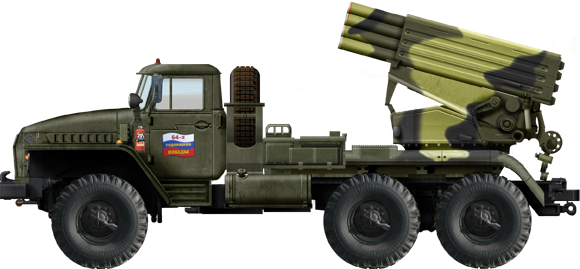
 BM-21 Grad
BM-21 Grad
25.01.2025 The BM-21 Grad is a Soviet-era multiple rocket launcher system that has been widely used and adapted by various nations and armed forces. Introduced in 1963, it fired 40 122 mm rockets fired in 20 sec., mounted on a Ural-375D 6x6 truck in the original version, later the Ural-4320 an others. From 20 it could fired enhanced later rockets up to 40 km and a large variety of warheads such as HE-FRAG, mines and Cluster munitions. Simple to operate and maintain it became the primary way to deliver a massive volume of firepower in a short time. It was declined into the BM-21M, Tornado-G, with Chinese Type 63, Iranian Arash and North Korean variant...
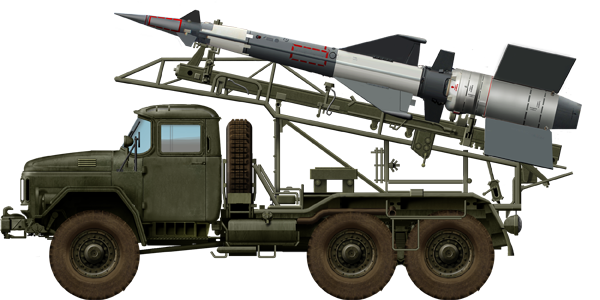
 ZIL-131
ZIL-131
15.12.2024 The ZIL-131 is a robust 6x6 3.5 tons standard medium military truck produced by the Soviet Union between 1966 and 2015 and designed for a variety of purposes. Known for its ruggedness and reliability it was adopted by more than fifty countries and declined into at least ive main variants. Zavod Imeni Likhachova (ZIL) made this vehicle powered by a V8 gasoline engine, 6.0 liters rated for 150 hp and with a manual, 5-speed gearbox with a 2-speed transfer case. The vehicle measured 7.04 m by 2.49 m wide and 2.98 m tall and unarmed. Road payload is 5 tons and 3.5t off-road, towing capacity 6 tons, twin fuel tanks 2×170 liters for a top speed of 80 km/h (50 mph), 800 km road range and capable of climbing a 58% incline. It featured naturally a central tire inflation system ahd had a 330 mm ground clearance. I saw a lot of combat worldwide and is still part of the inventory of most countries, and also widely spread in the civilian market after replacement by the ZIL-4334.

 BM-30 Smerch
BM-30 Smerch
17.11.2024 The Smerch ("tornado/whirlwind") GRAU designation 9K58 Smerch and 9A52-2 Smerch-M were designed to fire twelve solid-fuelled 300 mm rockets at longer range and with a heavier payload than any other system. These are tailored, depending on their warhead, to defeat personnel, but also soft or armored targets as well as enemy artillery batteries, command posts and ammunition depots. Designed from the early 1980s based on the common MAZ-543 8x8 multipurpose truck platform. The Smerch entered service with the Soviet Army in 1989, first observed in the West in 1983 classified as "MRL 280mm M1983". It was used by Russia (among others) in Chechnya, Syria, Donbass and Ukraine recenty and largely exported or adapted by India and China.
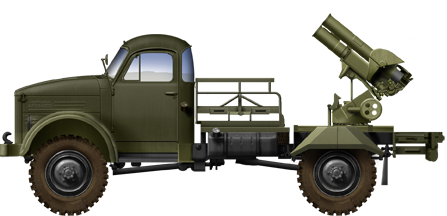
 BM-14
BM-14
14.09.2024 The BM-14 was the name of a weapon system composed of a rocket launcher, either 16 or 17 barrels depending of the type (BM-14-16/17) and improved (M) variants mounted on a veriety of trucks, ZIL-151, 157, 131, GAZ-63A and GAZ-66 for the lighter 4x4 BM-14-17 later variants. It was produced in the thousands to replace the WW2 legacy BM-13 Katyusha systems and replaced gradually in the 1970s by the BM-21 Grad. It was also largely exported and saw combat from the 1960s to in the Middle east to 2013 in Syria, still used by a few countries.
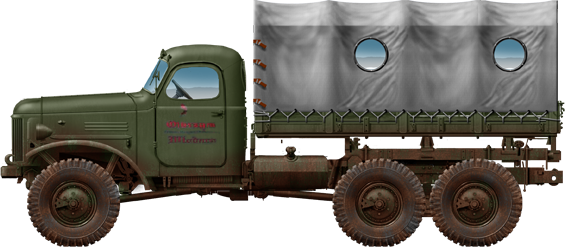
 ZIL-157 (1958)
ZIL-157 (1958)
18.08.2024 The ZIL-157 is a Soviet and Russian medium-tonnage truck with increased cross-country ability manufactured by the Likhachev Plant (ZIL). The ZIL-157 was mass-produced since 1958, mainly for the both Civilian needs and Armed Forces. Its cab a repeat of the ZIS-151's with minor changes. In time, the mass-produced ZIL-157 appeared soon obsolete and subsequently replaced in the 1970s by the ZIL-131 and Ural-375. A total of 797,934 in all modifications were produced, making it the largest Soviet truck production after the WW2 U7 (Based on the lend-lease
Stubaker US6). Created at the end of 1954, production started in 1958 and ended in 1991, IL stopping in 1978) and Novouralsk taking on. But the very last were made in 1994 in specialties. The antiquated, basically WW2 Soviet comfort cabin was improved in between with heater and an electric fan powered by the engine cooling system whereas suspension shock absorbers were improved. Despite of this, it's jarring to imaging this copy of the 1942 US6 was basically produced unchanged until after the end of the cold war... Note: As the subject is huge, expect updates in the future and one-offs (like the 157K tractor for the S-125 SAM trailer)...
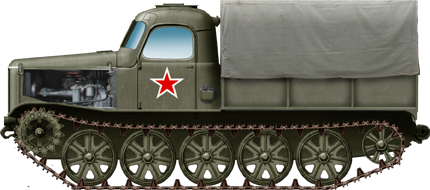
 AT-L
AT-L
27.07.2024 Artilleriyskiy Tyagach Lyogkiy, or AT-L (Russian: Артиллерийский Тягач, Лёгкий (АТ-Л), meaning light artillery tractor) was a Soviet Cold War era artillery tractor. The vehicle has the same cab as the ZIS-150 and ZIL-164 trucks, but has a different front end and grille similar to that of the GAZ-51 truck. Perhaps c1500 were manufactured in AT-LA and AT-LM versions until 1967, and they stayed in service until 1975.

 ZIL-135
ZIL-135
04.05.2024 The famous ZIL-135 family started in 1959 and was produced up to 1993 mostly by BAZ at Bryansk. This was the quintessential four axle heavy duty multpurpose military truck designed in USSR to carry heavy payloads which standard 1950s trucks could not do. The ZIL-135 which changed appareance between the K and L/M main versions had originally two engines, no suspensions, fwd and rear steerable axles and a drive system passing torque to the four wheels on one side at a time. One of the most famous derivative was the Luna-M missile TEL, or the BM-27 Uragan we just saw. This is the first of a serie of articles on this family. Illustration: the relatively confidential ZIL-135MP flatbed truck variant.
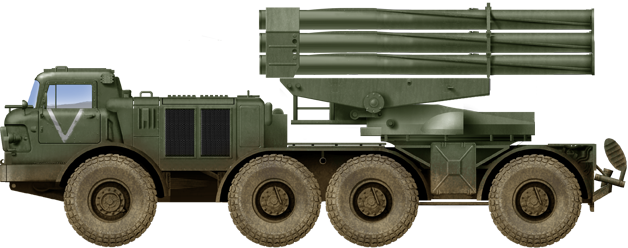
 9P140 Uragan
9P140 Uragan
13.04.2024 The BM-27 Uragan ("Hurricane", GRAU index 9P140) is a self-propelled 220 mm multiple rocket launcher (SPRL) designed in the Soviet Union, specifically to deliver cluster munitions from large 220 mm rockets. It entered service from 1975. For the first time, a rocket launcher vehicle, long derivative of the famous WW2 Katiusha, is able to deliver a spin and fin stabilized rocket. The vehicle was designed and manufactured by Splav State Research and Production Enterprise on the base of the dependable ZIL-135 8x8 prime mover already made famous by carrying the SCUD across the world. Like many other versions of the ZIL-135, the BM-27 Uragan was exported to some 19 countries, was licence-built and derived and found a lot of action in a dozen of wars and conflicts, and this story is not over. The improved Uragan-1M commissioned in 2008 is its designed successor.
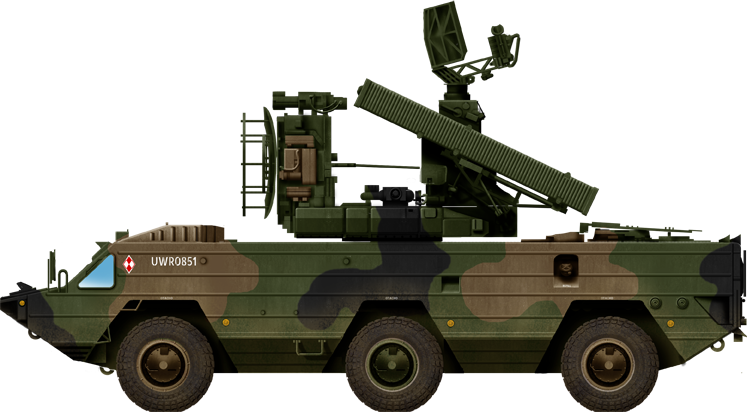
 9K33 OSA
9K33 OSA
27.01.2024 The 9K33 is a weapon system associated with a prime mover family by BAZ, the BAZ 5937, BAZ 5938 and BAZ 5939. In service by 1971 but developed from 1960 onwards until 1972, the 9K33 complex "wasp" (OSA) or NATO SA-8 Gecko, was the main low-altitude, short-range tactical surface-to-air missile system, organic to Soviet frontline motorized divisions. 1,200 were made on a modified BAZ-5937 chassis until 1988, with upgraded missiles. It was based on a 6x6 OSA-AKM amphibious truck (TELAR 9A33B, then TELAR 9A33BM2/3). It saw action in Lebanon (by Syria), Angola, Iraq, at the Russo-Georgian war of 2008, 2011 Lybian civ. war, Yemeni civ. war, in Nagorno-Karabakh, and Ukraine recently (15 lost). Poland and Belarus both developed their own variants.
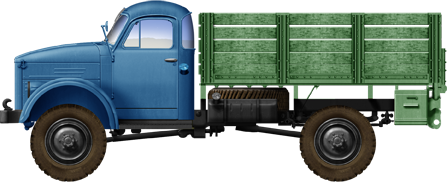
 GAZ-51 (1946)
GAZ-51 (1946)
30.11.2023 The GAZ-51 is the complementry piece of the GAZ-63 seen earlier. The latter was a 4x4 version of the former, a front-wheel drive light truck used in equal measure by the army and civilian sector. The GAZ-51 had a long development time going back to 1937 and which production, approved in 1941, was interrupted by the war and resumed in 1944-45, with many revisions, integrating tech from the Soviet built Studebaker US-6. With about 2,000,000 built from 1946 to 1950, ut rapidly became a standard, also licenced-built in Poland as the Lublin 51 and North Korea.

 OTR-21 Tochka (1976)
OTR-21 Tochka (1976)
♆ 04/11/2023 The OTR-21 Tochka (Tactical Operational Missile Complex "Point"') is a Soviet NBC protected amphibious tactical ballistic missile TEL (GRAU designation 9K79, NATO SS-21 Scarab). One missile is transported per vehicle, raised prior to launch, using an inertial guidance system. It started to be replaced from 2020 by the 9K720 Iskander.
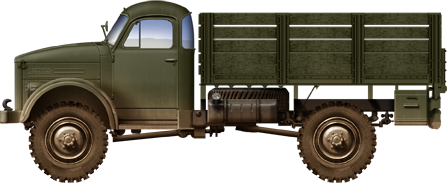
 GAZ 63 (1948)
GAZ 63 (1948)
14.09.2023 The GAZ 63 was a 4x4 military variant of the GAZ-51 based on the WW2 lend-lease studebaker US5 truck. The GAZ-63 was produced until 1968 to c474,000 vehicles in USSR alone. It was declined into 18 versions, exported and later produced in China, Poland and North Korea under licence, it was also used in Hungary, Romania, Syria and Ukraine. Some are still in circulation today.
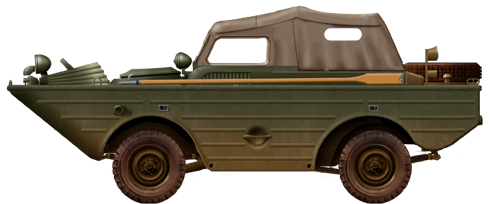
 GAZ 46 (1954)
GAZ 46 (1954)
14.06.2023 The GAZ 46 or MAV-46 was an amphibious 4x4 soviet vehicle made by the Gorky Automobile Plant from 1954-1958 and largely inspired by the German Schwimmvagen and US-built SEEP, largely sent to USSR during WW2 in lend-lease and appreciated far more than the allies, so much it was decided to replicate it, based on the GAZ-69. It was also used by the Warsaw pact and exported, but replaced in the late 1950s and 1960s by a new generation of better protected amphibious armoured vehicles.

 BAV-485 (1952)
BAV-485 (1952)
03.05.2023 The BAV-485 was a Soviet amphibious transport truck, the locally built version of the famous US-made DUKW made by GMC, of which 589 were delivered via lend-lease and proved their worth in the Vistula-Oder campaign. It was developed from 1949, produced from 1952 to 1962 by successive manufacturers, and widely distributed between motorized infantry units. Maintained into service until the 1970s, it was replaced by the tracked PTS.
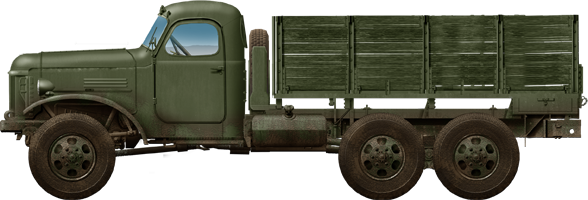
 ZiL-151 (1948)
ZiL-151 (1948)
14.01.2023 The Soviet ZIS-151 was the first postwar Medium Truck, a general-purpose model based on the ZIS-6 and lend-lease Studebaker US6. It was developed in many versions included the armored BTR-152 armored personnel carrier and BAV 485 amphibious vehicle. Having issues only solved by the ZIL-157 it was not widely exported but was licence-built as the Jiefang CA-30 in China. With some 150,000 delivered until 1958 it saw it fair share of action in the early cold war.

 5P85 TEL (S-300 SAM, SA-10 Grumble) (1978)
5P85 TEL (S-300 SAM, SA-10 Grumble) (1978)
10.08.2022 The 5P85 missile system is the mobile truck variant of the S-300 missile system family, declined into multiple variants, the 5P85-1, 5P85D and S, DU and TE1 among others. The first was based on the MAZ-543 and the next on the modernized MAZ-7910 TEL 8x8 truck. With more than 3,000 missiles systems built, most being of the TEL variant, it was also widely used from the 1980s and exported to 19 operators, most still in their inventory, including 350 in Russia alone.

 MAZ 543 (1965)
MAZ 543 (1965)
15.11.2021
The MAZ 543 was one of the two more common Soviet era missile TEL (Transporter Launcher Erector), massive export success mirorring the Scud missile itself, and wide wartime use. But as a vehicle, it started as a dump truck and is still used that way. This post will cover only for Part I, the SCUD missile TEL. Other versions are coming.
 06.08.2021: GAZ/UAZ 69 (1953)
06.08.2021: GAZ/UAZ 69 (1953)
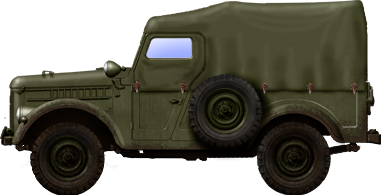
The "Kozlik", GAZ-69 was the main cold war utility military car of the Soviet Army, it's much beloved "Jeep" for two decades. Derived from WW2 models, and the postwar 1949 GAZ-67B, it was influenced by the lend-lease Jeep and took the same concept forward in terms of off-road handling caracteristics.
The GAZ-69 became the most common Warsaw Pact light 4x4 softskin vehicle to that point, produced from 1949 to 1972 for a staggering total of 600,000, inundating the export market and seeing action aplenty throughout the world. Although replaced by the UAZ 469 in the 1970s, this story is not over yet, as many are still in use in many countries, and it makes the delight of private owners and collectioners.
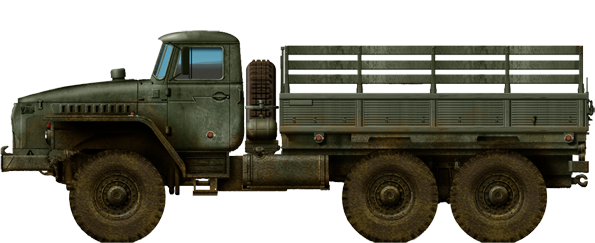
 URAL 4320
URAL 4320
02/01/2021
The URAL 4320 6x6 Truck was one of the main Soviet cold war modern off-road tactical utility truck. Around 10,000 were built from 1976. It was declined into many versions, including the BM-21 rocket launcher vehicle.